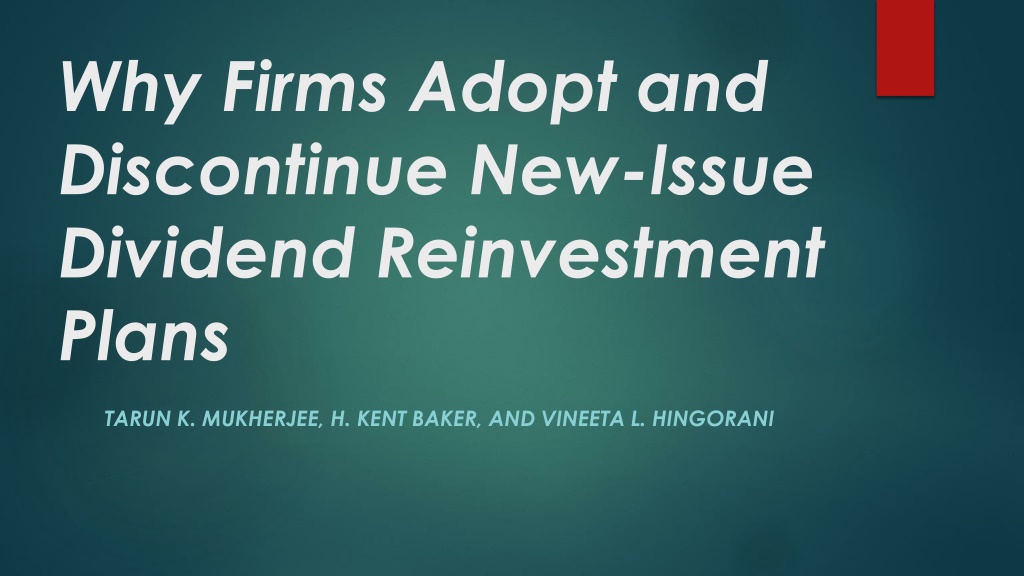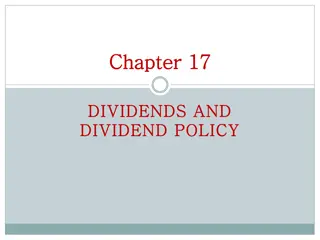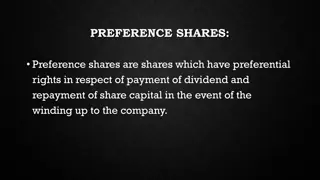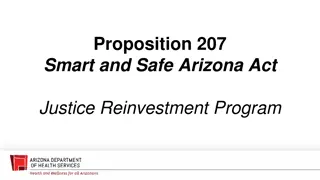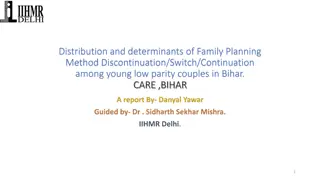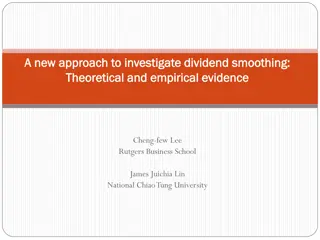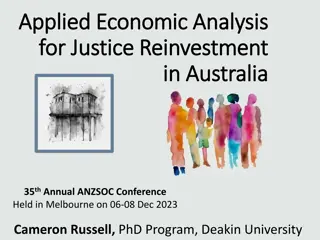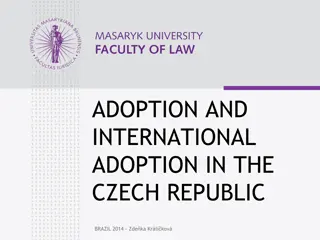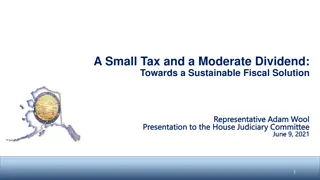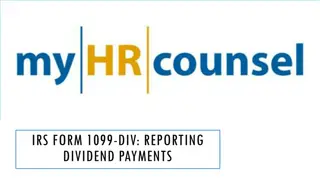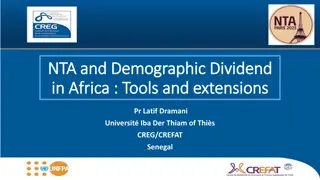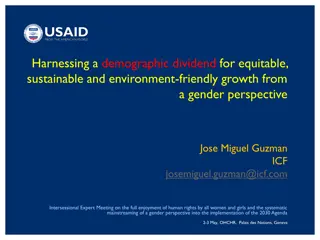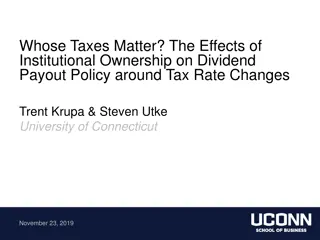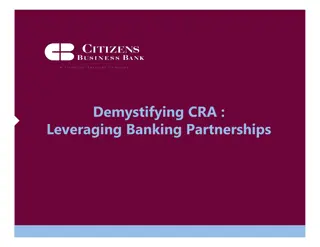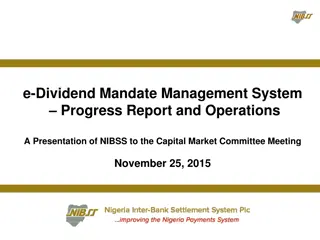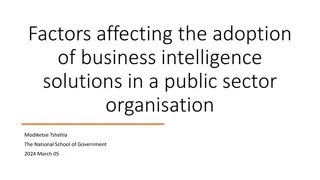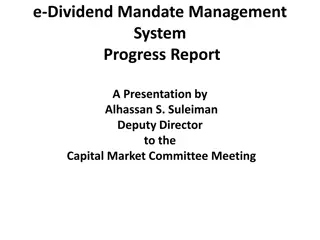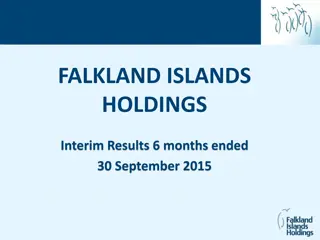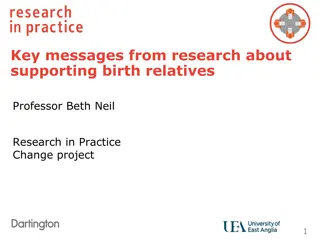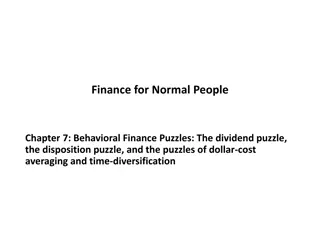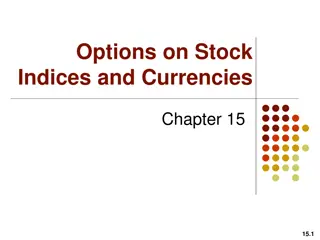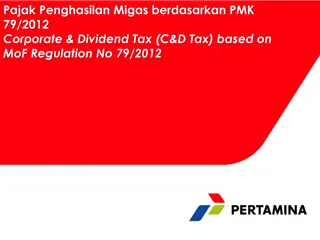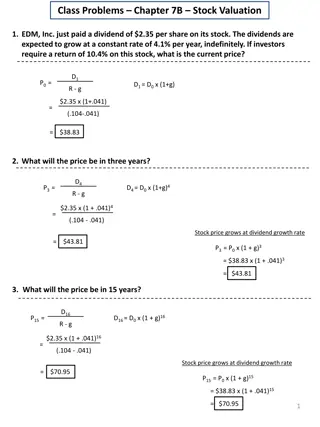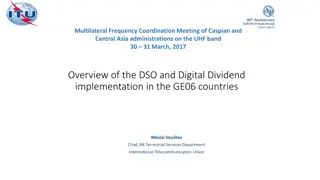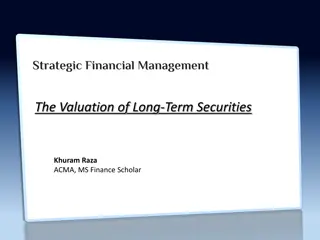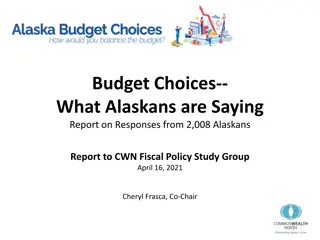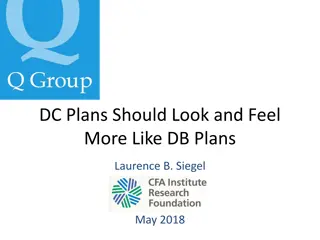Understanding Adoption and Discontinuation of New-Issue Dividend Reinvestment Plans
Exploring the reasons behind firms adopting and discontinuing new-issue dividend reinvestment plans, this study delves into the implications of raising equity through DRPs versus underwriters. It examines the motivations behind firms offering new-issue DRPs, reasons for abandonment, and the impact on shareholder wealth and market perception. The research identifies key arguments for the adoption and discontinuation of these plans, shedding light on the decision-making processes within firms.
Download Presentation

Please find below an Image/Link to download the presentation.
The content on the website is provided AS IS for your information and personal use only. It may not be sold, licensed, or shared on other websites without obtaining consent from the author. Download presentation by click this link. If you encounter any issues during the download, it is possible that the publisher has removed the file from their server.
E N D
Presentation Transcript
Why Firms Adopt and Discontinue New-Issue Dividend Reinvestment Plans TARUN K. MUKHERJEE, H. KENT BAKER, AND VINEETA L. HINGORANI
Dividend Reinvestment Plan In a dividend reinvestment plan (DRP), the participating company provides its shareholders with an option to use the announced dividends either to receive the payment in cash or use the amount to purchase additional shares. New-Issue Plans: provide a source of additional equity to the firm in the form of reinvested dividends
Raising Equity Through DRPs Versus Underwriters On the negative side, using new-issue DRPs to raise equity avoids market scrutiny and increases investor uncertainty. Evidence by Barnea, Haugen, and Senbet (1980) and Kao and Wu (1990) shows that forcing firms to enter the financial markets reduces agency costs. Also, firms using new-issue DRPs to raise equity lose underwriter certification of a new offering. Issuers using a prestigious underwriter to certify the quality of the public offering may benefit shareholders by achieving a higher offering price. Tinic (1988) suggests that reduced security returns are likely to result from losing underwriter certification on a new offering. On the positive side, using new-issue DRPs to raise equity avoids the negative signal a new equity offering provides. Asquith and Mullins (1986) find that a new offering of common stock to the public signals negative information to investors, resulting in decline in shareholder wealth. Compared with issuing shares directly via an underwritten offering, investors are likely to view regular issuances of shares via new-issue DRPs as having a weaker signal. Using new-issue DRPs also avoids flotation costs associated with a new offering.
Questions First, why do some firms in the same industry and with similar size offer new-issue DRPs, while others do not? Second, why do some firms abandon their new-issue DRPs?
1.Why firms adopt new-issue DRPs Three arguments for why firms adopt new-issue DRPs: 1: the better past performance or higher future growth argument, 2: the capital structure argument 3: the broadening the shareholder base argument.
2.Why do some firms abandon their new-issue DRPs? If firms adopt new-issue DRPs to help finance growth, then firms discontinuing new-issue DRPs are likely to be those that no longer need equity capital in the form of new shares to finance growth. Thus, firms adopting and subsequently discontinuing new-issue DRPs may do so because they no longer derive the benefits they once received by offering these plans. Consequently, no significant differences should exist in past performance, future growth, dividend payout ratios, risk, and leverage between firms discontinuing new-issue DRPs and matching non-DRP firms. We use the same 3 arguments: 1: the better past performance or higher future growth argument, 2: the capital structure argument 3: the broadening the shareholder base argument.
Hypotheses Compared with matching non-DRP firms, firms adopting new-issue DRPs have: H1: better past performance and H2: higher future growth prospects. H3: Compared with matching non-DRP firms, firms adopting new- issue DRPs have higher leverage. H4: Compared with matching non-DRP firms, firms adopting new- issue DRPs have higher institutional holdings.
Variables: In this study, we use three measures of past performance (Pagr, Mkbk, Arcs), one measure of future growth (Fagr), two measures of risk (Covr and Beta), and one measure each for leverage (Debt), dividend payout ratio (Dvpr), and institutional holding (Inst). In all cases t0 refers to the year in which a firm either adopts or discontinues a new-issue DRP.
Variables: Past performance Pagr = Asset growth from t-3 to t0 years Mkbk = Three-year average market-to-book value (t-2, t-1, and t0 years) Arcs = Average return on a firm s common stock over t-280 to t-30 days Future growth Fagr = Asset growth from t0 to t+3 years
Variables: Leverage Debt = Three-year average long-term debt-to-total assets ratio (t-2, t-1, and t0 years) Dividend payout Dvpr = Three-year average dividend payout ratio (t-2, t-1, and t0 years) Risk Covr = Coefficient of variation of stock returns as a percent: sArcs/Arcs Beta = Common stock beta obtained by regressing stock returns against market returns(using the S&P 500 index as the market portfolio) using t-280 to t-30 days Institutional holdings Inst = Three-year average institutional holdings (t-2, t-1, and t0 years)
Predicted Sign of the difference between the 9 variables among the two kind of firm Firms adopting new-issue DRPs matching non-DRP firms.
Data: Sample 68 The source of our sample of DRPs is Kinoshita s Guide to Dividend Reinvestment Plans. We limit the sample to U.S. corporations that adopted or discontinued new-issue plans between 1983 and 1992. Our rationale for choosing this period is to exclude firms that participated in the trend of discontinuing DRPs only to reestablish them as direct purchase plans, which showed a marked increase after the mid-1990s (Steinbart and Swanson 1998). The initial sample consists of 68 DRP adopting firms and 31 DRP discontinuing firms. Of the 68 DRP adopting firms, we include the 55 firms adopting new-issue plans but exclude the 13 firms adopting market plans. Our sample of 31 DRP discontinuing firms includes only nine firms that adopted new-issue DRPs during the study period. 55 31 9
Statistical Procedures We use both univariate and multivariate tests in our analysis. We test for differences in each of the nine variables between two subsets: Firms discontinuing new-issue DRPs VS Non-DRP firms Firms adopting new-issue DRPs VS Non-DRP firms 1. One tail t-test on difference of the 9 variables. 2. Logistic regression analysis to differentiate between these two type of firms. 1. Two tail t-test on difference of the 9 variables. 2. Logistic regression analysis to differentiate between these two type of firms.
Conclusions on Subset 1 Based on the t-tests, firms adopting new-issue DRPs have a significantly greater past asset growth rate (Pagr), debt-to-assets ratio (Debt), systematic risk (Beta) and Institutional holdings than do the matching non-DRP firms. Results of both t-tests and logit regression show some support for the better past performance argument. The logistic regression shows the importance of two performance-related variables (Pagr and Arcs) in differentiating between these two groups. The estimated equation correctly classifies 75.0 percent of the firms into the appropriate categories. The t-tests also provide support for the broadening the ownership base argument.
Conclusions on Subset 2 Based on the t-tests, firms discontinuing new- issue DRPs have lower past asset growth rate (Pagr) and market-to-book ratio (Mkbk), both at the 0.10 level, compared with matching non-DRP firms. Results show some support for the better past performance argument.
Summary and Conclusions Overall, the results lend some support to the notion that firms needing funds initiate new-issue DRPs, and they discontinue such plans when the need for external funding diminishes. This study provides new insights involving the characteristics of firms adopting and discontinuing new-issue DRPs.
Reflections Investment behavior of investors in China Its impacts: Market Volatility Market as a indicator of economy Valuation difficulties Market improvement requires top-down as well as bottem up efforts.
